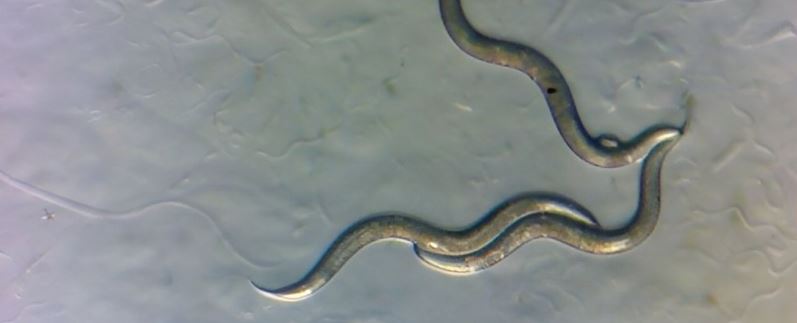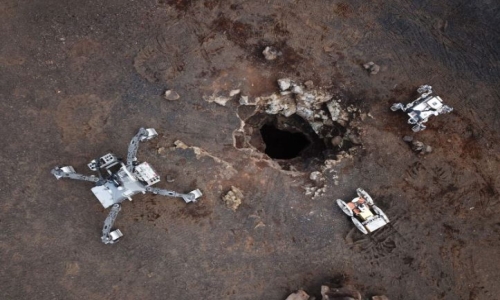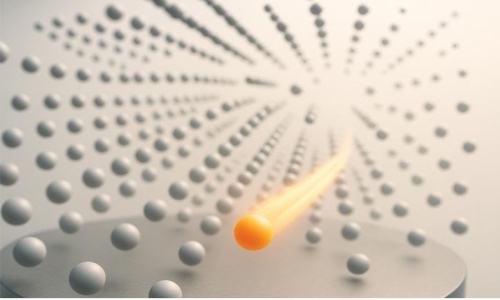


 3:29:43
3:29:43  2024-07-28
2024-07-28  1330
1330

Microscopic worms that live their lives in the highly radioactive environment of the Chernobyl Exclusion Zone (CEZ) appear to do so completely free of radiation damage.
Nematodes collected from the area have shown no sign of damage to their genomes, contrary to what might be expected for organisms living in such a dangerous place. The finding, published earlier this year, doesn't suggest the CEZ is safe, the researchers say, but rather the worms are resilient and able to adroitly adapt to conditions that might be inhospitable to other species.
This, says a team of biologists led by Sophia Tintori of New York University, could offer some insights into DNA repair mechanisms that could one day be adapted for use in human medicine.
Since the explosion of a reactor at the Chernobyl Nuclear Power Plant in April 1986, the area around it and the nearby town of Pripyat in Ukraine have been strictly off-limits to anybody without government approval. The radioactive materials deposited into the environment expose organisms to extremely unsafe levels of ionizing radiation, greatly enhancing the risk of mutation, cancer, and death.
It's going to be thousands of years before Chernobyl, as it is spelt in Ukraine, is safe for human habitation again. Most of us know that and steer clear accordingly. But animals … well, they don't understand to stay away. They go where they want, and the exclusion zone has since become a strange sort of radioactive, 2,600-square kilometer (1,000 square mile) animal sanctuary.
Tests of animals that live in the region have shown clear genetic differences from animals that don't. But there's still a lot we don't know about the effects of the disaster on the local ecosystems.
"Chornobyl was a tragedy of incomprehensible scale, but we still don't have a great grasp on the effects of the disaster on local populations," Tintori said at the time. "Did the sudden environmental shift select for species, or even individuals within a species, that are naturally more resistant to ionizing radiation?"
One way to gain insights into this question is to look at nematodes – microscopic roundworms that live in a range of habitats (including the bodies of other organisms). Nematodes can be remarkably hardy; there have been multiple cases of nematodes reawakening after thousands of years frozen in permafrost.
They have simple genomes, and live short lives, which means multiple generations can be studied in a short space of time. This makes them excellent model organisms for studying a range of things, from biological development, to DNA repair and toxin response. This is why Tintori and her colleagues went digging in Chornobyl to find nematodes of the species Oschieus tipulae, which typically lives in soil.
They collected hundreds of nematodes from rotten fruit, leaf litter, and the soil in the CEZ, using Geiger counters to measure ambient radiation and wearing protective suits against radioactive dust. The researchers cultured nearly 300 of their collected worms in a laboratory, and selected 15 specimens of O. tipulae for genome sequencing.
These sequenced genomes were then compared to the sequenced genomes of five specimens of O. tipulae from elsewhere in the world – the Philippines, Germany, the United States, Mauritius, and Australia.
The CEZ worms were mostly more genetically similar to each other than they were to the other worms, with the genetic distance corresponding to the geographic distance for the entire 20-strain sample. But signs of DNA damage from the radiation environment were lacking.
The team carefully analyzed the worms' genome, and found no evidence of the large-scale chromosomal rearrangements expected from a mutagenic environment. They also found no correlation between the mutation rate of the worms, and the strength of the ambient radiation at the location each worm hailed from.
Finally, they conducted tests on the descendents on each of the 20 worm strains to determine how well the population tolerates DNA damage. Although each lineage had a different tolerance level, this, too, had no correlation with the ambient radiation to which their ancestors were exposed.
The team could only conclude that there is no evidence of any genetic impact of the CEZ environment on the genomes of O. tipulae.
And what they did find could help researchers try to figure out why some humans are more susceptible to cancer than others.
"Now that we know which strains of O. tipulae are more sensitive or more tolerant to DNA damage, we can use these strains to study why different individuals are more likely than others to suffer the effects of carcinogens," Tintari said.
"Thinking about how individuals respond differently to DNA-damaging agents in the environment is something that will help us have a clear vision of our own risk factors."
Reality Of Islam |
|

A new NURBS

A research

Researchers
 9:3:43
9:3:43
 2018-11-05
2018-11-05
10 benefits of Marriage in Islam
 7:5:22
7:5:22
 2019-04-08
2019-04-08
benefits of reciting surat yunus, hud &
 9:45:7
9:45:7
 2018-12-24
2018-12-24
advantages & disadvantages of divorce
 11:35:12
11:35:12
 2018-06-10
2018-06-10
 6:0:51
6:0:51
 2018-10-16
2018-10-16
 2:42:26
2:42:26
 2023-02-02
2023-02-02
 7:59:14
7:59:14
 2018-06-21
2018-06-21
 11:34:48
11:34:48
 2022-06-29
2022-06-29
 10:55:53
10:55:53
 2022-06-13
2022-06-13
 8:3:0
8:3:0
 2018-06-21
2018-06-21
allah will not answer all your prayers
 6:56:28
6:56:28
 2022-01-01
2022-01-01
 8:15:37
8:15:37
 2023-02-16
2023-02-16
 5:41:46
5:41:46
 2023-03-18
2023-03-18
| LATEST |